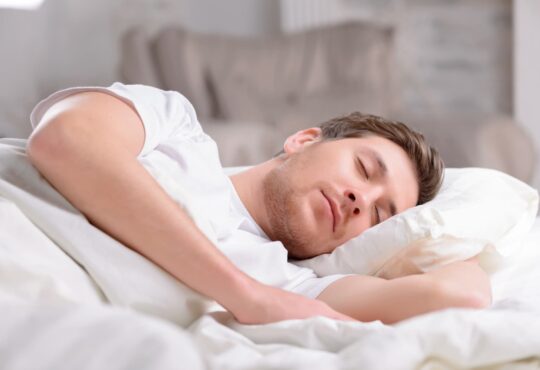
One of the elderly’s greatest fears is falling.
That seems too simple compared to such horrible conditions as heart disease, stroke, cancer and Alzheimer’s.
However, that fear is entirely justified. Falls kill thousands of seniors every year. Plus, they can trigger a cascade of medical problems.
20% of seniors who break their hips die within five years.
Many others are injured so badly they cannot return to their homes. They must spend many months in hospitals and nursing homes, which have their own health hazards. If nothing else, they’re inactive for long periods, leading to further physical decline.
According to the Centers for Disease Control and Prevention, 25% of people over 65 fall in a year.
The risk is especially high at night. Many seniors don’t sleep soundly, so they wake up. They can be disoriented, but still try to walk to the bathroom in the dark.
However, You Can Reduce the Danger
1. Look for underlying conditions before they result in a fall
People with eyesight problems may not see hazards ahead of them, so they trip.
Medications can also cause seniors to fall. High blood pressure medications can cause people to become lightheaded and dizzy. Medications for sleep problems or depression can cause people to lose their sense of balance. Some prescription drugs for heart problems and diabetes can cause people to feel unsteady on their feet.
2. Reorganize Your Home to Reduce Risk
Make sure you have a bright night light in your bedroom, hallways and bathroom.
Remove any throw rugs.
Wear shoes with nonskid soles, even at home.
Remove any object on the floor.
Don’t wax your floors. If somebody spills a liquid, clean it up immediately.
Place solid, sturdy handrails on both sides of any stairways.
Install grab bars in your bathroom, including the areas for your toilet and shower.
3. A Do-It-Yourself Home Test
It’s called “Get Up and Go.”
You begin sitting in a chair. You stand up from the chair without using your hands for support, walk ten feet, turn around, walk back to the chair and sit back down – without using your hands for support.
If that takes you more than ten seconds, you are at high risk of falling.
4. Take Vitamin D Supplements
It’s well-known Vitamin D is crucial to bone health, so getting enough Vitamin D may help prevent or reduce the weak bones of osteoporosis.
However, Vitamin D deficiency is also associated with muscle weakness.
To get around on your own, you need strong muscles to move your strong bones. Too many seniors are so frail because they have both weak bones and weak muscles.
And Vitamin D addresses those problems.
Around a dozen scientific studies show that older men and women who take Vitamin D supplements suffer fewer falls than those who don’t.
That’s why the US Preventive Services Task Force and the American Geriatric Society recommend those at high risk for falls supplement with Vitamin D.
Vitamin D boosts overall muscle performance, and it especially strengthens your quadricep muscles. They’re in your thighs, so they’re critical to walking without falling.
Other studies show Vitamin D improves your sense of balance, although researchers aren’t sure how it does so. Maybe it’s by benefiting your nerves or improving your brain’s functioning. Keeping your sense of balance well-tuned is vital for preventing falls.
Nobody Agrees on How Much Vitamin D You Should Take
The best way to get Vitamin D is from skin exposure to sunlight. But many people are now frightened to do this.
You should be careful so you don’t injure your skin by burning it.
And how much Vitamin D you get from the sun depends on the month, how far north or south you live, the darkness or whiteness of your skin, and what time of day it is.
And, of course, you can’t get any Vitamin D from the sun if you stay inside all day.
1,000 units per day is fairly conservative. It’s fat-soluble, so it remains stored in your body. That’s why I usually take a 5,000 unit capsule once a week. You could also take 2,000 units every other day.
Some people recommend higher doses of up to 4,000 or even 5,000 units per day. I cut back in the summer because I get more sun exposure then, but increase what I take in the winter.
5. The Best Fall Prevention Remains Exercise
Get out and walk at least 20 minutes a day – more is better.
You keep your leg muscles strong and your brain alert.
Practice Balancing Every Day
Lean against a wall or hold on to something secure for support (not a chair, which could move).
Stand on one leg for as long as you can. Reverse legs.
That’s something you can do while watching TV or listening to the radio.
If you’re frail already, have someone watch you all the time. As you practice, you’ll regain lost strength, lowering your risk of falling and injury.
http://www.gericareonline.net/tools/eng/falls/attachments/Falls_Tool_2_Get_Up_and_Go_Test.pdf
https://www.aafp.org/afp/2000/0401/p2173.html
https://www.quora.com/How-exactly-do-elderly-people-die-from-falls
https://nutritionfacts.org/video/should-vitamin-d-supplements-be-taken-to-prevent-falls/
http://www.hiphealth.ca/blog/falling_seniors__a_preventable_problem_a__huge_health_burden_







